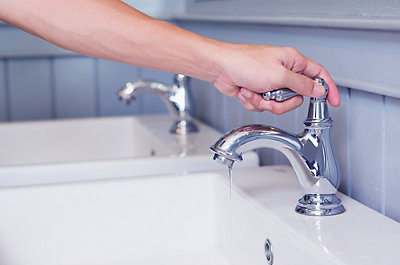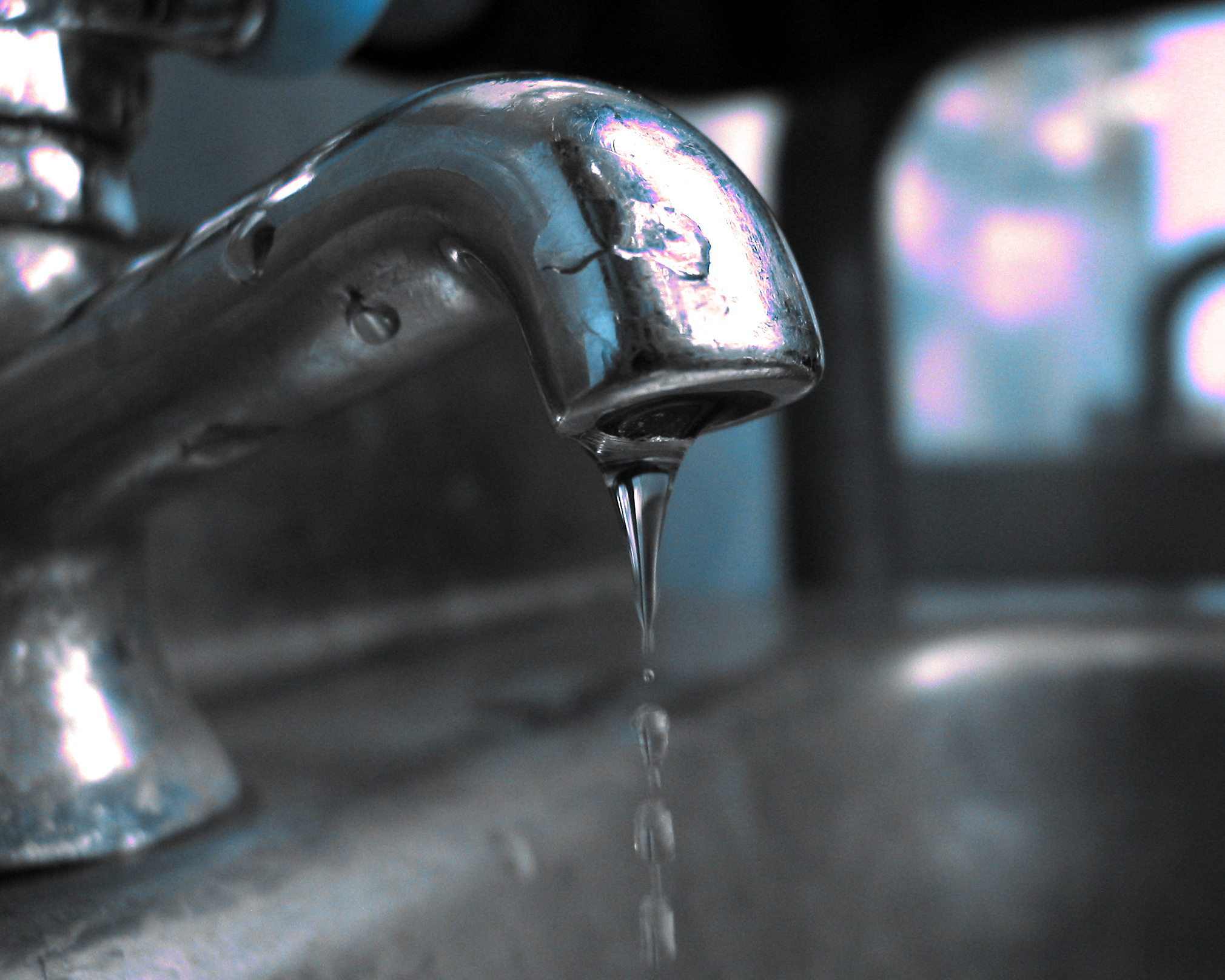Learning the Significance of Fixing a Broken Faucet
Learning the Significance of Fixing a Broken Faucet
Blog Article
We've discovered this article relating to 4 Common Reasons for a Leaky Faucet below on the net and thought it made sense to talk about it with you on my blog.

Trickling taps could appear like a minor hassle, but their effect exceeds just the nuisance of the sound. From wasting water to sustaining unnecessary financial expenses and health risks, ignoring a dripping tap can result in different repercussions. In this write-up, we'll explore why it's critical to resolve this usual home issue without delay and efficiently.
Wastefulness of Water
Ecological Effect
Leaking faucets contribute considerably to water waste. According to the Epa (EPA), a single faucet leaking at one drip per secondly can waste greater than 3,000 gallons of water annually. This not just pressures water sources however likewise affects ecological communities and wild animals dependent on them.
Step-by-Step Guide to Dealing With a Dripping Faucet
Devices Called for
Prior to trying to take care of a leaking tap, collect the essential tools, consisting of an adjustable wrench, screwdrivers, substitute parts (such as washing machines or cartridges), and plumber's tape.
Common Faucet Issues and Their Solutions
Recognize the type of tap and the specific problem creating the drip. Common troubles include worn-out washers, rusty shutoff seats, or defective O-rings. Describe maker instructions or online tutorials for step-by-step guidance on repair services.
Financial Prices
Enhanced Water Bills
Past the ecological impact, dripping faucets can blow up water expenses substantially. The gathered wastefulness in time equates right into greater utility costs, which might have been prevented with timely repair services.
Potential Home Damages
Moreover, long term dripping can lead to harm to fixtures and surfaces bordering the tap. Water accumulation can create discoloration, deterioration, and also architectural concerns if left neglected, causing added repair costs.
Health and wellness Concerns
Mold and Mold Growth
The consistent presence of dampness from a leaking tap develops an ideal setting for mold and mildew and mildew growth. These fungis not only jeopardize interior air quality however additionally posture health and wellness risks, especially for people with respiratory conditions or allergies.
Waterborne Illness
Stationary water in leaking faucets can become a breeding ground for microorganisms and other virus, raising the threat of waterborne illness. Contaminants such as Legionella bacteria grow in stationary water, potentially leading to major illnesses when ingested or breathed in.
DIY vs. Expert Fixing
Advantages and disadvantages of DIY Repair Service
While some might attempt to deal with a dripping faucet themselves, DIY repair work include their very own set of challenges. Without appropriate knowledge and devices, DIY attempts can aggravate the concern or lead to incomplete repair work, extending the trouble.
Advantages of Working With a Professional Plumber
Working with an expert plumber makes sure that the underlying root cause of the leaking tap is resolved properly. Plumbers possess the expertise and tools to detect and fix faucet problems effectively, conserving time and lessening the danger of further damage.
Environmental Obligation
Private Payment to Conservation
Taking duty for dealing with leaking taps aligns with more comprehensive efforts towards water preservation and environmental sustainability. Every individual's activities jointly make a considerable influence on protecting valuable sources.
Sustainable Living Practices
By prioritizing prompt repair services and adopting water-saving behaviors, people add to lasting living methods that benefit both existing and future generations.
Preventive Measures
Normal Maintenance Tips
To avoid dripping faucets, carry out routine upkeep such as cleansing aerators, examining for leaks, and replacing worn-out parts promptly. In addition, think about installing water-saving tools or updating to much more effective components.
Value of Prompt Repair Works
Attending to dripping faucets as soon as they're noticed protects against more water waste and possible damage, eventually saving both water and cash over time.
Effect On Building Value
Understanding of Well-Maintained Building
Keeping a home in good condition, consisting of dealing with upkeep concerns like trickling taps, improves its regarded worth and value amongst potential customers or tenants.
Impact on Resale Worth
Qualities with well-kept plumbing fixtures, including faucets, command greater resale worths in the realty market. Addressing leaking taps can contribute to a favorable impact during home assessments and negotiations.
Final thought
Attending to a leaking faucet exceeds plain benefit; it's a necessary action towards conserving water, lowering economic prices, and safeguarding health and home. Whether via do it yourself repair work or professional assistance, doing something about it to repair dripping faucets is a tiny yet impactful method to advertise liable stewardship of resources and add to a much healthier, a lot more sustainable future.
How to Fix a Leaky Faucet: Step-by-Step Repair Guide
A leaky faucet may seem like a simple annoyance, but if it's not fixed promptly, that leak could cost hundreds to potentially thousands. From water damage to mold, mildew, and high water bills, even a tiny leak can be catastrophic if left unattended. Damage like this can even affect the overall value of your home, so it's important to take the right approach for leaky faucet repair. You may need the help of a plumber in some cases, but we've got a few tips you can try on how to fix a leaky faucet before calling the pros.
Four Faucet Types
When you're learning how to fix a leaky faucet, the first step is knowing what kind of faucet you're working with! There are four common types.
Cartridge Faucets
Cartridge faucets come in one- or two-handled varieties. In one-handled cartridge faucets, hot and cold water combines in a single cartridge. In the two-handled versions, hot and cold water are controlled separately and mixed in the faucet.
Ball Faucets
Ball faucets have a single lever you push up and down to adjust the pressure and rotate to change the temperature. A slotted metal ball controls the amount of water allowed into the spout.
Compression Washer Faucets
They're the oldest type of faucet, but they're still used in many homes — especially older ones. Compression faucets have two separate handles that, when turned, raise or lower the washer that seals a water valve. This valve stops water from flowing through the faucet when it is turned off.
Disc Faucets
Disc faucets rarely need to be repaired due to their maintenance-free design. The water flow is controlled by two discs — the upper one raises and lowers against a fixed lower disc, creating a watertight seal. If your disc faucet starts leaking, you may need to replace the seals or clean residue buildup from the inlets.
Fixing a Leaky Faucet
Step 1: Turn Off the Water
Whether you're learning how to fix a leaky bathtub faucet or how to fix a leaky kitchen faucet, always turn off the water supply to your working area when you're fixing a leak. The last thing you want is a flood added to your list of things to fix.
Look for the shutoff valves below your sink or around the tub and turn them clockwise to stop the water flow. If your faucet doesn't have shutoff valves, you may need to turn off the water for the whole house. Check to make sure it's off by turning the faucet on. If nothing comes out, you're ready to start the repair.
Step 2: Take Apart the Faucet
How you disassemble your faucet depends on the type of fixture you have. You can use a flathead screwdriver to remove the caps on top of the handle or handles for cartridge and compression faucets. Inside, you should see handle screws. Unscrew these with a screwdriver to remove the handle.
Disc- and ball-style faucets will typically have an inlet screw near the handle, and removing that will reveal the interior of the faucet.
Detach the Valve Stem
For cartridge- and compression-style faucets, you'll see the inner valve stem or cartridge once you remove the faucet handles. If you have a compression faucet, unscrew the brass valve stem. If you have a cartridge faucet, pull out the cartridge. If your cartridge has been in place for a while, it may require some tools or extra force to remove it due to mineral deposits.
Examine and Replace Parts
Once you've removed the parts, check them out to confirm what needs to be replaced. You may see corroded rubber washers, O-rings, stems, or cartridges. On a ball-style faucet, check the seats and springs for damage.
If you need to repair a leaky disc faucet, check the inlet and seals on the lower disc.
Once you determine what parts must be replaced, visit your local hardware store. Bring the damaged parts with you to ensure you can purchase the correct components to replace them.
Clean Valves and Faucet Cavity
If you've removed a stem or cartridge, you may notice mineral buildup in the faucet's threads. Use white vinegar to clean the valve seat by soaking it for a few minutes, then scrub it away with a soft toothbrush and rinse with warm water. You can also clean the interior of the faucet in the same way.
Reassemble the Faucet
Once your faucet is cleaned and the required parts have been replaced, it's time to reassemble it. Put the pieces back together and slowly turn the water supply back on. Doing this slowly is crucial because too much initial water pressure can damage the new hardware you've just installed.
https://homewarranty.firstam.com/blog/how-to-fix-leaky-faucet

Hopefully you liked our excerpt about 4 Common Reasons for a Leaky Faucet. Thanks a ton for taking a few minutes to browse our article. Those who liked our page plz consider to share it. Thanks a bunch for being here. Return soon.
Report this page